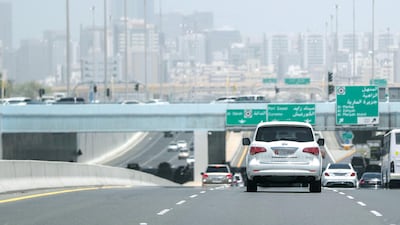The economies of the Arabian Gulf are well placed to achieve sustainable growth in the years to come, due to their low debt-to-gross domestic product ratios, vast portfolios of liquid assets and strategies to diversify economies away from oil.
“Factors such as fluctuating oil prices, ongoing replacement of fossil fuels and slow transformation of some economies has induced a general sentiment of Gulf economies reporting a slowdown in economic activity,” said a report by business consultancy Oliver Wyman.
“On the contrary, the combination of such a strong portfolio of liquid assets and low debt levels are the key factors in the sustainability of Gulf economies.”
The Gulf Cooperation Council – which comprises the UAE, Saudi Arabia, Kuwait, Bahrain, Oman and Qatar – has a combined $43.7 trillion (Dh160.48tn) in liquid assets and quasi-liquid assets (including $3.3tn in sovereign wealth funds and $40.4tn in proven oil and gas reserves). This equates to $841m in assets per capita across the region, the report published on Tuesday said.
The most significant action taken by GCC states to boost their economies in the past few years is the roll-out of economic diversification programmes to wean them off oil, it said.
All six countries have a relatively high dependence on hydrocarbons compared to other global markets. According to an International Monetary Fund paper last June, average oil revenues for the region were close to 80 per cent of government revenues during 2000-2017, and oil exports amounted to 65 per cent of total exports over the period.
However, the level of dependence varies between countries – in the UAE, hydrocarbons make up around 43 per cent of total GDP, one of the lowest levels in the GCC.
In the UAE – as well as Saudi Arabia, Bahrain and others – governments are working to modify revenue streams, increase foreign ownership and facilitate the creation of new private sector businesses to grow and diversify their economies.
For example, under a GCC-wide agreement in 2017, the six countries are each introducing a 5 per cent value-added tax on certain goods and services. The UAE and Saudi Arabia were the first to do this last year, followed by Bahrain in 2019.
Meanwhile, the UAE on Tuesday announced a list of 122 economic activities across 13 industry sectors, where 100 per cent foreign ownership is permitted. Previously, foreign owners could only hold up to 49 per cent of a company registered in the UAE unless it was within a designated free trade zone.
“Looking towards the future, GCC economies must take advantage of the valuable lead time they have to transform into post-oil economies, because fossil-fuel substitution will not happen as fast as many people believe it will,” said Pedro Oliver, regional head of the MEA (Middle East and Africa) region at Oliver Wyman.
The consultancy's report, entitled The Arabian Gulf Economies: Asset rich, transforming and full of opportunities', highlights other economic growth drivers in the GCC. These include widespread restructuring of the public sector, concerted efforts to develop FinTech (financial technology) and otherwise digitalise industries, modernisation of transport and construction, and growing tourism.
At the same time, the GCC has a relatively young population, which is being upskilled to contribute to the workforce in the years ahead. Overall population growth will also increase internal consumption and support GDP growth, the report said.

